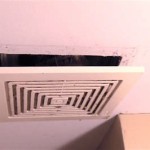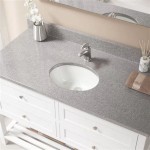How Often to Clean Bathroom Drains
Bathroom drains are susceptible to clogging due to the accumulation of hair, soap scum, toothpaste, and other debris. Regular cleaning is crucial to maintain proper drainage and prevent unpleasant odors and potential plumbing issues. The frequency of bathroom drain cleaning depends on several factors, including the type of drain, the volume of usage, and the presence of specific clogging agents.
Factors Influencing Cleaning Frequency
The frequency with which bathroom drains should be cleaned varies based on several key factors:
1. Drain Type
Different types of drains require different levels of maintenance. Shower drains, which collect hair and dead skin cells, typically require more frequent cleaning than sink drains. Bathtub drains, due to their large size and potential for hair and soap scum buildup, also necessitate regular maintenance.
2. Usage Volume
The number of people using the bathroom and the frequency of usage directly impact the rate of debris accumulation. Households with multiple users or frequent showers may require more frequent drain cleaning compared to households with fewer inhabitants and less frequent usage.
3. Clogging Agents
The presence of specific clogging agents, such as hair, soap scum, and toothpaste, can accelerate the need for drain cleaning. Hair, particularly long hair, is a notorious clogging agent, while soap scum can create a sticky film that traps other debris.
Recommended Cleaning Frequency
While specific cleaning schedules may vary based on individual circumstances, general guidelines recommend cleaning bathroom drains at the following frequencies:
1. Shower Drains: Weekly
Shower drains are prone to hair accumulation, which can quickly lead to clogging. Weekly cleaning using a drain snake or a plunger helps prevent blockages and keeps the drain flowing smoothly.
2. Sink Drains: Monthly
Sink drains are less prone to clogging compared to shower drains. However, monthly cleaning using a drain cleaner or a homemade solution effectively removes accumulated debris and prevents unpleasant odors.
3. Bathtub Drains: Quarterly
Bathtub drains, due to their larger size, often require less frequent cleaning. Quarterly cleaning with a drain snake or a plunger helps remove hair and soap scum buildup and ensures proper drainage.
Signs of Clogged Drains
Recognizing the signs of a clogged drain is crucial for prompt action and preventing potential plumbing issues. Common indicators of a clogged drain include:
1. Slow Draining
A noticeable delay in water draining away is a clear indication of a partially blocked drain.
2. Gurgling Sounds
Gurgling noises during drainage indicate air trapped in the drainpipe, often caused by a blockage.
3. Foul Odors
Unpleasant odors emanate from clogged drains as stagnant water and accumulated debris create a breeding ground for bacteria.
4. Water Backflow
In severe cases, water may backflow into the tub or sink, indicating a significant blockage.
Conclusion
Regular cleaning of bathroom drains is essential for maintaining proper plumbing functionality, preventing unpleasant odors, and avoiding costly plumbing repairs. By adhering to the recommended cleaning frequencies and recognizing the signs of a clogged drain, homeowners can ensure the smooth operation of their bathroom fixtures and eliminate the potential for plumbing complications.

How Often Should I Clean My Drains At Home

How Often Should You Clean Your Drains

3 Ways To Clean A Bathroom Sink Drain Wikihow

How To Know If Your Drain Is Due For A Cleaning Enduric

How To Clean Bathroom Drains Unclog Your Shower And Sink

3 Ways To Clean A Bathroom Sink Drain Wikihow

Easiest Way How To Clean Bathroom Sink Drain Myhomeware

How To Clean Bathroom Drains Unclog Your Shower And Sink

How To Clean Drains And Unclog Shower Or Sink Today

How To Clear A Clogged Drain Reviews By Wirecutter







